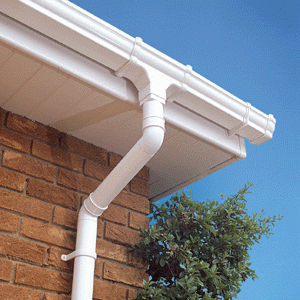
Best Guttering
Add a review FollowOverview
-
Founded Date 08/26/1980
-
Sectors Technology
-
Posted Jobs 0
-
Viewed 61
Company Description
20 Questions You Must Always Ask About Quality Guttering Before Purchasing It
Quality Guttering: The Essential Guide to Proper Drainage Systems
Guttering plays an important role in the health and maintenance of a structure. Its main purpose is to gather and divert rainwater away from roofings and foundations, thereby avoiding damage and ensuring longevity. Quality guttering is necessary for safeguarding homes and commercial structures alike from a myriad of potential problems, varying from water seepage to structural damage. This post checks out the importance of quality guttering, the different types available, the materials utilized, and maintenance tips, using a thorough guide for property owners.
Significance of Quality Guttering
Quality guttering is not just a visual addition to a building; it serves several important functions:
-
Water Diversion: Properly installed guttering systems channel rainwater far from structures, securing foundations from water-related concerns like settling and fractures.
-
Avoiding Erosion: Quality guttering can prevent soil erosion around the residential or commercial property, maintaining landscaping and preventing expensive repairs.
-
Mold and Mildew Prevention: By directing water far from walls and roofings, guttering decreases the danger of mold and mildew, promoting a much healthier living environment.
-
Maintaining Exterior: Adequate gutter systems keep exteriors devoid of water discolorations and damage, which can weaken materials like wood and brick over time.
-
Enhancing Property Value: A well-maintained gutter system enhances curb appeal and increases overall residential or commercial property value.
Kinds of Guttering
Guttering is available in numerous types, each suited for particular requirements and visual choices. Below is a list of some common types of guttering systems:
1. K-Style Gutters
- Most typical type utilized in residential properties.
- Provides a flat bottom and an ornamental front.
- Readily available in different widths and depths.
2. Half-Round Gutters
- Semi-circular shape.
- Supplies a timeless look ideal for historic homes.
- Can manage large volumes of water but might need more frequent cleaning.
3. Box Gutters
- Usually concealed within the roof structure.
- Serves big commercial structures or flat-roofed homes.
- Suitable for large water volumes but needs professional installation.
4. Gutter Guards
- Extra protection to stay out debris.
- Minimizes maintenance needs substantially.
- Available in different products and designs.
5. Seamless Gutters
- Tailor-made on-site to fit the structure.
- Minimizes the opportunities of leaks due to less seams.
- More expensive but often worth the financial investment.
Guttering Materials
When selecting quality guttering, the product is important. Each product has its pros and cons, which affect resilience, cost, and look.
| Material | Pros | Cons |
|---|---|---|
| Aluminum | Light-weight, rust-resistant, affordable. | Can damage quickly, reveals scratches. |
| Copper | Incredibly resilient, aesthetically appealing. | Extremely expensive, oxidizes with time. |
| Vinyl | Lightweight, easy to install, affordable. | Not as long lasting, can crack in cold. |
| Steel | Very strong, durable. | Prone to rust, heavy. |
| Zinc | Lasting, corrosion-resistant. | Pricey, requires professional installation. |
Maintenance Tips for Quality Guttering
Correct maintenance of gutter systems is vital to ensure they work effectively and last longer. Here are some best practices to follow:
-
Regular Cleaning: Clear leaves, debris, and dirt from gutters a minimum of twice a year, or more regularly throughout heavy fall seasons.
-
Examine for Damage: Inspect gutters and downspouts for indications of rust, cracks, or damage; perform repairs quickly.
-
Guarantee Proper Sloping: Gutters must have a small slope towards downspouts to permit efficient water flow. Inspect the slope throughout assessments.
-
Display Water Flow: After heavy rains, make sure gutters and downspouts are directing water away from the foundation. Look out for pooling or areas that may indicate an obstruction.
-
Purchase Gutter Guards: Gutter guards can prevent particles from getting in, hence minimizing the frequency of cleaning.
Frequently Asked Questions About Quality Guttering
Q1: How frequently should I clean my gutters?
A: It is a good idea to tidy gutters a minimum of two times a year, preferably in spring and fall. However, if trees neighbor, more frequent cleaning may be essential.
Q2: What are the indications that my gutters require repair?
A: Signs include sagging gutters, water discolorations on the outside walls, noticeable rust, mold around the foundation, and pooling water near the property.
Q3: Can I install gutters myself?
A: While DIY installation is possible, working with a professional is usually recommended for a seamless fit, specifically for complex systems or products.
Q4: What are gutter guards, and do I require them?
A: Gutter guards are protective screens positioned over the gutters to prevent debris build-up. They can conserve time on cleaning and are advantageous if you live in a leaf-heavy location.

Q5: How much does quality guttering expense?
A: The cost differs based on materials, type, and installation charges. Usually, homeowners can anticipate to pay between ₤ 5 to ₤ 30 per linear foot, depending upon their options.
Quality guttering is an indispensable component of home maintenance. Comprehending its importance, types, materials, and maintenance requires empowers home owners to make informed decisions. Investing in top quality guttering and keeping it will protect buildings versus water damage, protect outside visual appeals, and eventually contribute to long-term home health and worth. By attending to guttering proactively, property owners not just secure their investment but also boost their living environment.

